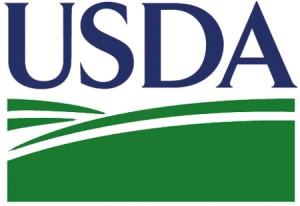USDA accepting more farmland for wildlife habitat in Kentucky
Posted on Jul 20, 2015  The initiative, known as State Acres for Wildlife Enhancement (SAFE), is part of the USDA Conservation Reserve Program (CRP), a federally-funded voluntary program that for 30 years has assisted agricultural producers with the cost of restoring, enhancing and protecting certain grasses, shrubs and trees to improve water quality, prevent soil erosion and reduce loss of wildlife habitat. In return, USDA provides participants with rental payments and cost-share assistance. CRP has helped farmers and ranchers prevent more than 8 billion tons of soil from eroding, reduce nitrogen and phosphorous runoff relative to cropland by 95 and 85 percent respectively, and even sequester 43 million tons of greenhouse gases annually, equal to taking 8 million cars off the road.
The initiative, known as State Acres for Wildlife Enhancement (SAFE), is part of the USDA Conservation Reserve Program (CRP), a federally-funded voluntary program that for 30 years has assisted agricultural producers with the cost of restoring, enhancing and protecting certain grasses, shrubs and trees to improve water quality, prevent soil erosion and reduce loss of wildlife habitat. In return, USDA provides participants with rental payments and cost-share assistance. CRP has helped farmers and ranchers prevent more than 8 billion tons of soil from eroding, reduce nitrogen and phosphorous runoff relative to cropland by 95 and 85 percent respectively, and even sequester 43 million tons of greenhouse gases annually, equal to taking 8 million cars off the road.
In total, up to 400,000 acres of additional agricultural land will be eligible for wildlife habitat restoration funding through this SAFE announcement. The additional acres are part of an earlier CRP wildlife habitat announcement made by Secretary Vilsack. Currently, more than 1 million acres, representing 98 projects, are enrolled in SAFE nationwide.
“This year marks the 30th anniversary of the Conservation Reserve Program, which has not only resulted in significant soil and water improvements, but also greater populations of waterfowl, gamebirds and other wildlife native to the rural countryside,” said McCauley. “Here in Kentucky, 11,600 acres in the Early Successional/Bottomland Habitat are designed specifically to increase Northern Bobwhite Quail species habitat. Since it was first established in 2011, farmers and ranchers have enrolled 10,844 acres resulting in a significant increase in abundance of Bobwhite as well as other grassland songbird species. We hope to continue this progress by offering interested farmers and ranchers the opportunity to enroll another 1,100 acres in this project.”
Interested producers can offer land for enrollment in SAFE and other CRP initiatives by contacting their local FSA county office at http://offices.usda.gov. To learn more the 30th anniversary of CRP and to review 30 success stories throughout the year, visit www.fsa.usda.gov/CRPis30 or follow Twitter at #CRPis30. And for more information about FSA conservation programs, visit www.fsa.usda.gov/conservation.
The Conservation Reserve Program was reauthorized by 2014 Farm Bill, which builds on historic economic gains in rural America over the past six years, while achieving meaningful reform and billions of dollars in savings for taxpayers. Since enactment, USDA has made significant progress to implement each provision of this critical legislation, including providing disaster relief to farmers and ranchers; strengthening risk management tools; expanding access to rural credit; funding critical research; establishing innovative public-private conservation partnerships; developing new markets for rural-made products; and investing in infrastructure, housing and community facilities to help improve quality of life in rural America. For more information, visit www.usda.gov/farmbill.
Source: Farm Service Agency Press Release
Tagged Post Topics Include: 2014 Farm Bill, Agricultural Land, Conservation Reserve Program, CRP, CRP Announcement, Early Successional Bottomland Habitat, Erosion, Executive Director, Farmers, Federally Funded, FSA, Funding, John W McCauley, Kentucky, Kentucky Farm Service Agency, Lexington, Northern Bobwhite Quail, Ranchers, Restoration Funding, SAFE, Secretary, Soil, State Acres For Wildlife Enhancement, US Department of Agriculture, USDA, Vilsack, Voluntary, Water, Wildlife habitat, Wildlife Habitat Restoration
Comments